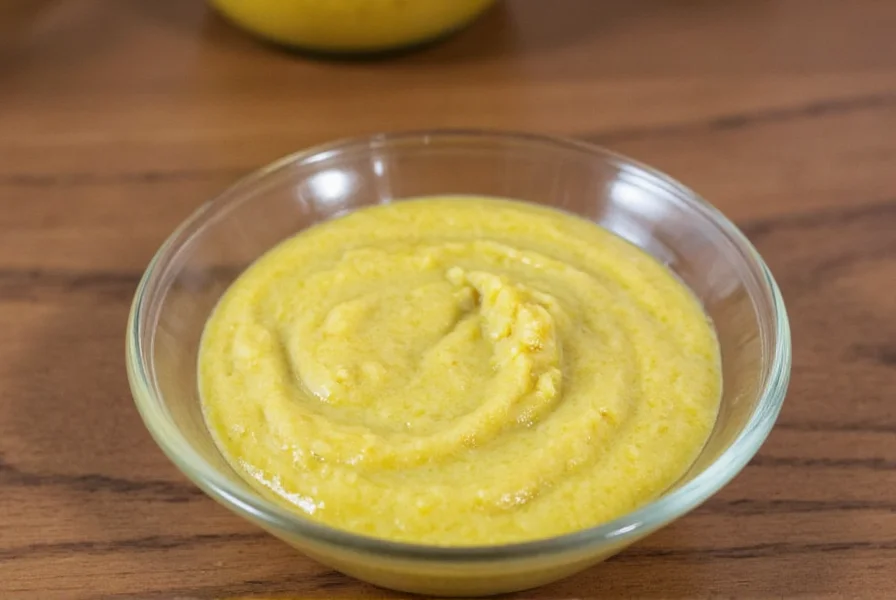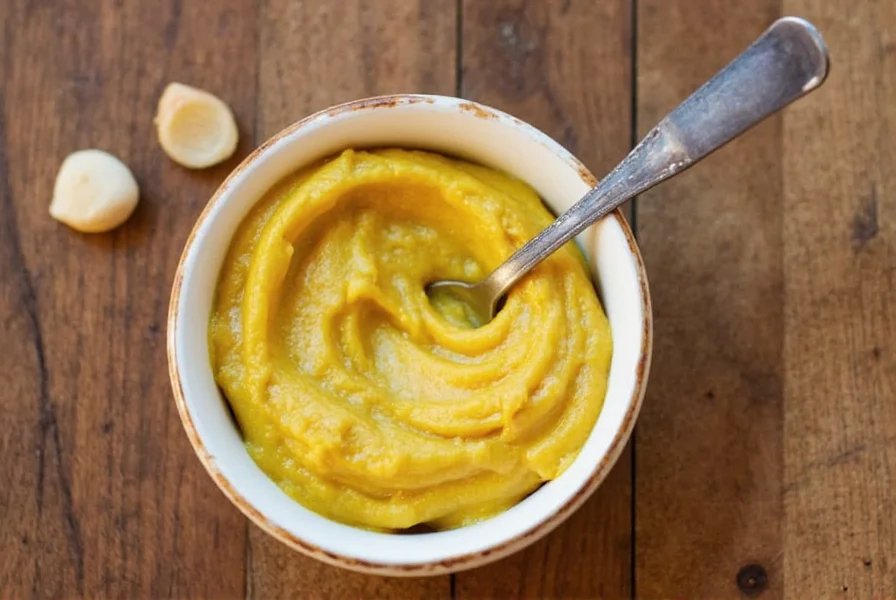Creating exceptional homemade mustard requires understanding the science behind its transformation from bitter seeds to tangy condiment. The magic happens through enzymatic reactions when mustard seeds meet liquid—a process called hydrolysis that develops the characteristic pungency. This chemical reaction peaks around 24 hours, explaining why patience yields superior results compared to rushed preparations.
Essential Ingredients and Their Roles
Successful homemade mustard depends on selecting quality components:
| Ingredient | Function | Recommended Options |
|---|---|---|
| Mustard Seeds | Provide base flavor and heat | Yellow (mild), Brown (medium heat), Black (strongest) |
| Vinegar | Activates enzymes, preserves | Apple cider (fruity), White wine (delicate), Malt (robust) |
| Sweeteners | Balances acidity | Honey, maple syrup, or sugar (1-2 tsp per cup) |
| Spices | Flavor complexity | Garlic powder, turmeric, paprika (add after fermentation) |
Step-by-Step Preparation Guide
The traditional method produces deeper flavor than quick blends:
- Soak seeds: Combine 1 cup mustard seeds with 1 cup liquid (½ vinegar + ½ water) in non-reactive container
- Wait 24 hours: Room temperature soaking allows enzymes to activate (refrigeration slows process)
- Adjust consistency: Add 2-4 tbsp additional liquid while blending to reach desired thickness
- Season: Incorporate sweeteners and spices after blending (heat deactivates enzymes)
- Mature: Store in airtight container for 3-7 days for flavors to meld

Popular Homemade Mustard Variations
Master these three foundational styles before experimenting:
- Classic Yellow Mustard: 50% yellow seeds + 50% brown seeds, turmeric for color, 1 tbsp sugar per cup
- Dijon-Style: 100% brown seeds, white wine vinegar, no sweetener, blended ultra-smooth
- Whole Grain: 75% soaked seeds + 25% dry seeds added at end for texture contrast
Troubleshooting Common Issues
Address these frequent homemade mustard problems:
- Too bitter: Extend soaking time to 48 hours; add ½ tsp baking soda during blending
- Separating: Incorporate 1 tsp xanthan gum while blending; shake well before use
- Weak flavor: Use darker vinegar; increase seed-to-liquid ratio to 1.25:1
- Mold development: Ensure pH below 4.0 (add more vinegar); always use clean utensils
Storage Recommendations
Proper preservation maintains quality:
- Refrigerate in airtight container for up to 6 months
- Freeze in ice cube trays for 1-year storage (thaw overnight)
- Surface darkening is normal—stir before use
- Discard if mold appears or vinegar smell turns sharp/sour
Why Homemade Outperforms Store-Bought
Commercial mustards often contain:
- Preservatives like potassium sorbate
- Thickeners such as modified food starch
- Artificial colors (Yellow 5, Yellow 6)
- High-fructose corn syrup
Homemade versions offer complete ingredient control, fresher flavor profiles, and typically cost 40-60% less per ounce than premium brands. The customization potential—from adding local honey to incorporating regional spices—creates unique condiments impossible to find commercially.
Frequently Asked Questions
How long does homemade mustard last in the refrigerator?
Properly stored in an airtight container, homemade mustard maintains quality for 4-6 months. The vinegar content acts as a natural preservative, though flavor intensity gradually diminishes after 3 months. Always use clean utensils to prevent contamination.
Can I make mustard without soaking the seeds overnight?
While possible to blend dry seeds immediately, skipping the soaking step produces inferior results. The 24-hour soak activates myrosinase enzymes essential for developing complex flavor and proper texture. Quick versions lack depth and often remain unpleasantly bitter.
Why does my homemade mustard taste different each time I make it?
Mustard seed potency varies by harvest year and storage conditions. For consistent results, use seeds purchased within 6 months, maintain precise liquid ratios, and allow identical maturation time (7 days ideal). Store unused seeds in the freezer to preserve enzyme activity.
What's the secret to making smooth Dijon-style mustard at home?
Achieve authentic Dijon texture by using 100% brown mustard seeds, white wine vinegar, and blending with a high-powered immersion blender for 5 minutes. The key is adding liquid gradually while blending—start with just enough to create a paste, then slowly incorporate remaining liquid for ultra-smooth consistency.
Can I use different vinegars in homemade mustard recipes?
Absolutely—vinegar choice dramatically impacts flavor. Apple cider vinegar adds fruity notes, white wine vinegar provides delicate acidity, and malt vinegar creates robust depth. Avoid balsamic (overpowers) and distilled white (too harsh). For best results, use vinegar with 5-6% acidity to ensure proper preservation.











 浙公网安备
33010002000092号
浙公网安备
33010002000092号 浙B2-20120091-4
浙B2-20120091-4